Discussion
Fixing the $500B problem with today's AI
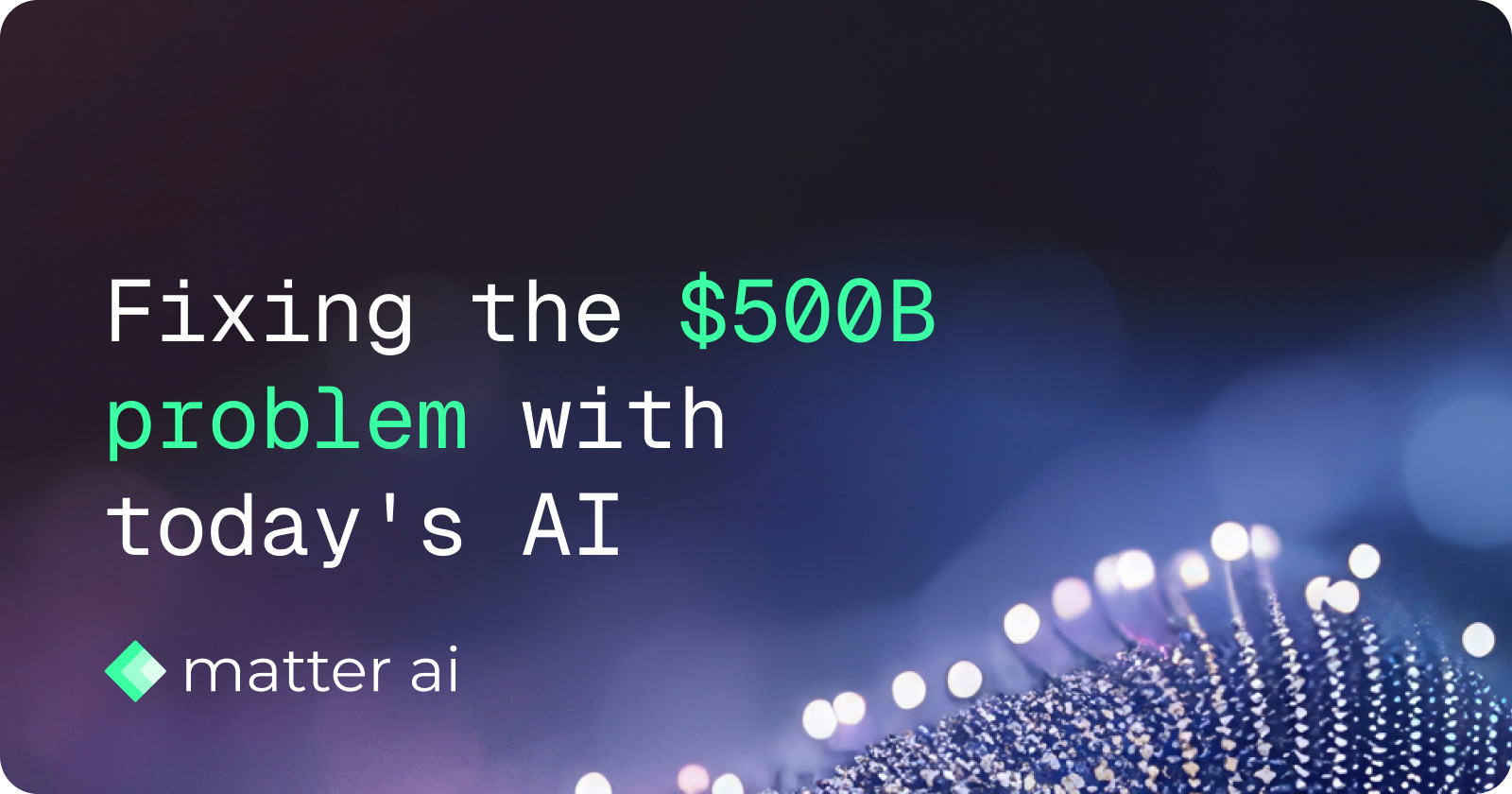
The $500B Problem with Today's AI
The artificial intelligence revolution has arrived with a bang. We're witnessing unprecedented investment flows into AI startups, massive compute expenditures by tech giants, and breathless headlines about AI's transformative potential. Yet beneath the surface of this extraordinary boom lies a fundamental issue that could cost the global economy half a trillion dollars: today's AI systems, for all their impressive capabilities, lack the core attributes that define genuine intelligence.

No True Intelligence
• Large language models are extraordinary mimics that produce text sounding authoritative and knowledgeable
- They operate through sophisticated pattern matching rather than genuine reasoning or understanding
- These systems cannot independently verify information or distinguish reliable sources from misinformation
- They have no ability to use computers or access real-time information to enhance their responses
- Every conversation starts fresh with no memory of previous interactions or learned context
Zero Persistent Learning
• Every conversation with AI begins in a vacuum with no memory of previous interactions
- The system cannot build on past experiences or learn from corrections provided by users
- There is no mechanism for consolidating knowledge or improving performance over time
- Each interaction requires the same computational resources regardless of previous similar queries
- Companies cannot develop customized AI that learns their specific workflows or preferences
Compressed Internet Blur
• Billions of parameters represent a compressed snapshot of the internet not deep understanding
- These systems hold fuzzy statistical representations that can confidently state incorrect information
- They lack the structured comprehension that comes from genuine learning and experience
- Context windows are merely temporary memory buffers that disappear once filled
- AI cannot maintain coherent thought or project planning over extended problem-solving sessions
Innovation Imposters
• AI excels at recombining existing information in novel ways through remixing content
- These systems cannot venture into conceptual territory never explored by humans before
- They cannot reason from first principles to develop genuinely new scientific hypotheses
- Current approaches cannot create solutions that break completely from existing templates
- True breakthrough innovation requires venturing beyond training data into uncharted intellectual territory
Memory Without Abstraction
• Human intelligence relies on forgetting irrelevant details while retaining core principles
- AI systems attempt to remember everything leading to information overload and poor generalization
- The inability to forget means AI cannot develop hierarchical abstract representations of knowledge
- Current systems store vast specific examples without extracting underlying principles for novel applications
- This prevents the kind of pattern recognition and conceptual leap that characterizes human learning
Missing Brain Architecture
• The human brain contains specialized structures like hippocampus and amygdala working together
- Current AI lacks equivalent emotional intelligence that guides human decision-making and creativity
- These systems have no instinctual drives providing motivation or direction for problem-solving
- There is no integrated memory system allowing for the kind of deep learning found in biological intelligence
- AI operates without the motivational framework that drives human curiosity and goal-oriented behavior
Stuck on the Data Manifold
• AI systems cannot venture beyond their training data to solve novel problems in unexplored domains
- They can interpolate between existing examples but cannot extrapolate into genuinely new territory
- Current approaches cannot generate truly novel solutions that push the boundaries of human knowledge
- They are constrained to operate within the statistical manifold of human-generated content
- This limitation prevents AI from being truly creative or solving problems requiring first-principles reasoning
The Half Trillion Dollar Question
These limitations are not merely academic concerns. They represent a fundamental misalignment between the capabilities of current AI systems and the expectations that have driven half a trillion dollars in investment. Companies are spending enormous sums on AI systems that cannot learn, cannot innovate, cannot persistently improve, and cannot truly understand the problems they are meant to solve.
The economic implications are profound. When businesses invest in AI expecting intelligent automation, persistent learning, and genuine innovation, but receive instead sophisticated mimicry and temporary memory, the gap represents real economic value that is not being created. This is the $500B problem with today's AI: the massive investment in systems that lack the fundamental attributes of intelligence.
How MatterAI is Fixing the Problem
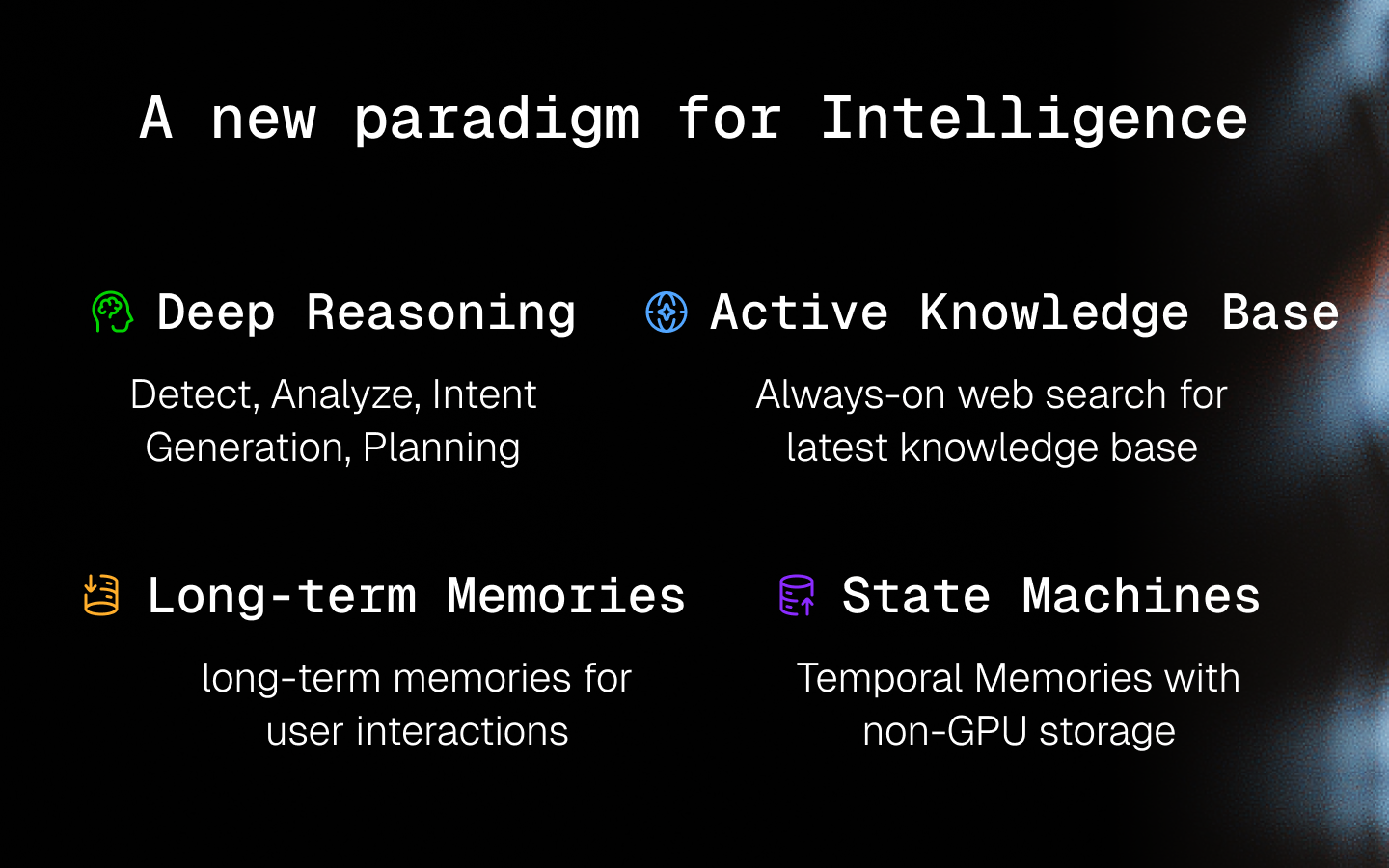
Deep Reasoning: Detect, Analyze, Intent Generation, Planning
- MatterAI systems go beyond pattern matching by implementing genuine reasoning workflows that detect user intent, analyze complex problems, and generate actionable plans
- This approach directly addresses the "No True Intelligence" problem by enabling systems to understand context and objectives rather than simply mimicking responses
- The intent generation capability allows MatterAI to distinguish between different types of queries and apply appropriate problem-solving strategies
- By incorporating planning capabilities, MatterAI can tackle complex multi-step problems that would overwhelm traditional LLMs, solving the "Innovation Imposters" issue by creating genuine novel solutions rather than remixing existing content
State Machines: Temporal Memories with non-GPU storage
- MatterAI implements sophisticated state machines that maintain temporal memories across conversations and sessions using persistent storage systems beyond GPU memory
- This architecture directly solves the "Zero Persistent Learning" problem by allowing systems to maintain context and learned information between interactions
- The temporal memory system enables MatterAI to understand the progression of complex tasks and maintain coherent long-term problem-solving approaches
- By moving beyond compressed internet snapshots, these state machines create structured understanding that addresses the "Compressed Internet Blur" limitation
Persistent Storage: Long Term memories about the usage, no cold starts
- MatterAI systems maintain long-term memories about user interactions, preferences, and learned patterns through persistent storage mechanisms
- This eliminates the "cold start" problem where every interaction begins from scratch, directly addressing the "Zero Persistent Learning" limitation
- The system can build customized understanding of individual users and organizations, creating personalized AI experiences that improve over time
- Through selective retention and abstraction mechanisms, MatterAI addresses the "Memory Without Abstraction" problem by consolidating experiences into higher-level knowledge representations
Active Knowledge Base: Always-on web search for latest knowledge base
- MatterAI maintains an always-on connection to current information through active web search capabilities, ensuring access to the latest knowledge
- This directly counters the "Compressed Internet Blur" limitation by providing access to real-time information rather than static training data snapshots
- The system can venture beyond its training data to access novel information and current events, solving the "Stuck on the Data Manifold" problem
- By continuously updating its knowledge base, MatterAI can provide accurate information about rapidly changing domains and break free from the constraints of historical training data
Share this Article:
More Articles
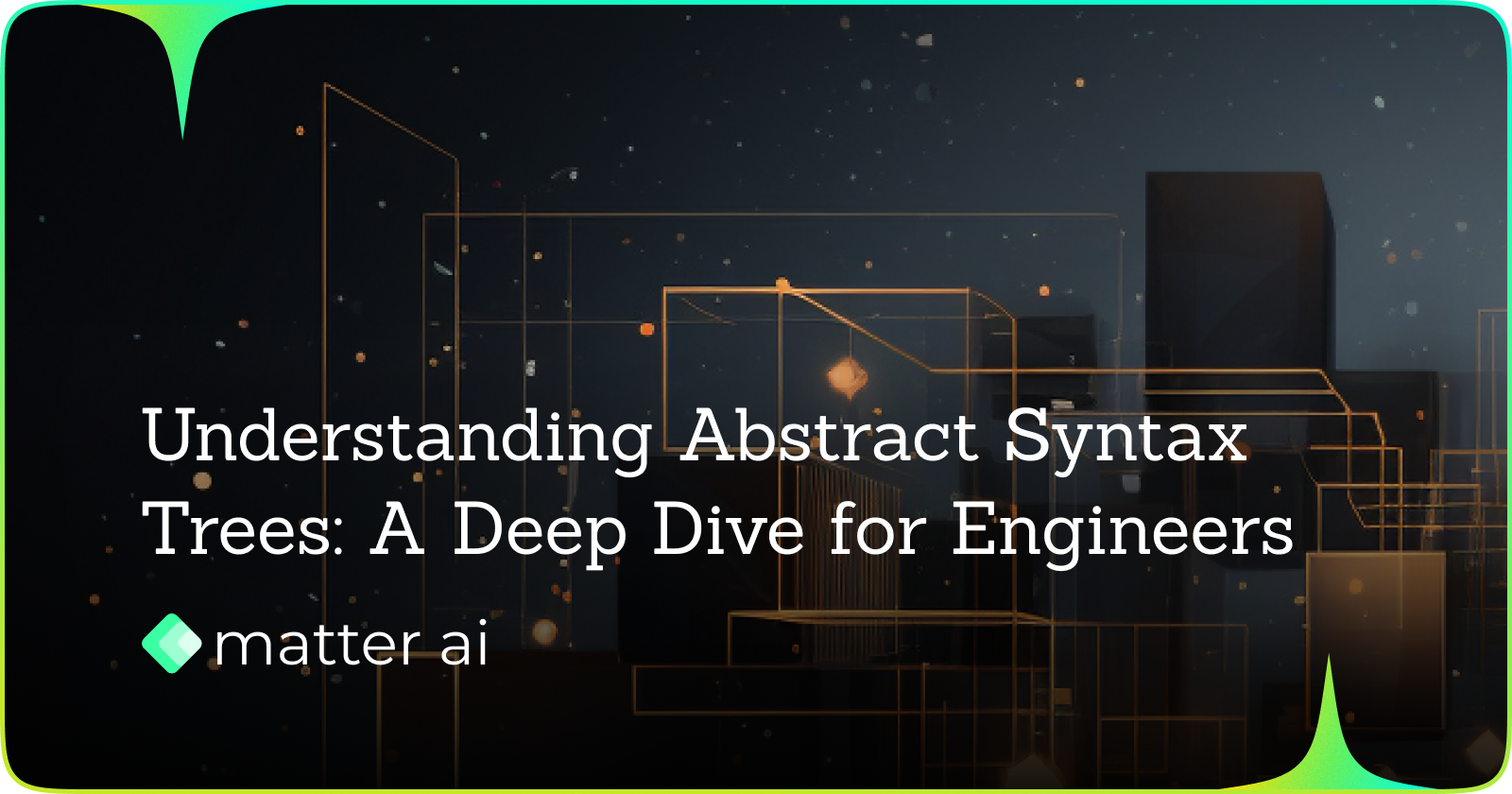
Introducing Axon Code, VS Code AI Coding Agent | Cursor Alternative
The next generation harness AI Coding Agent
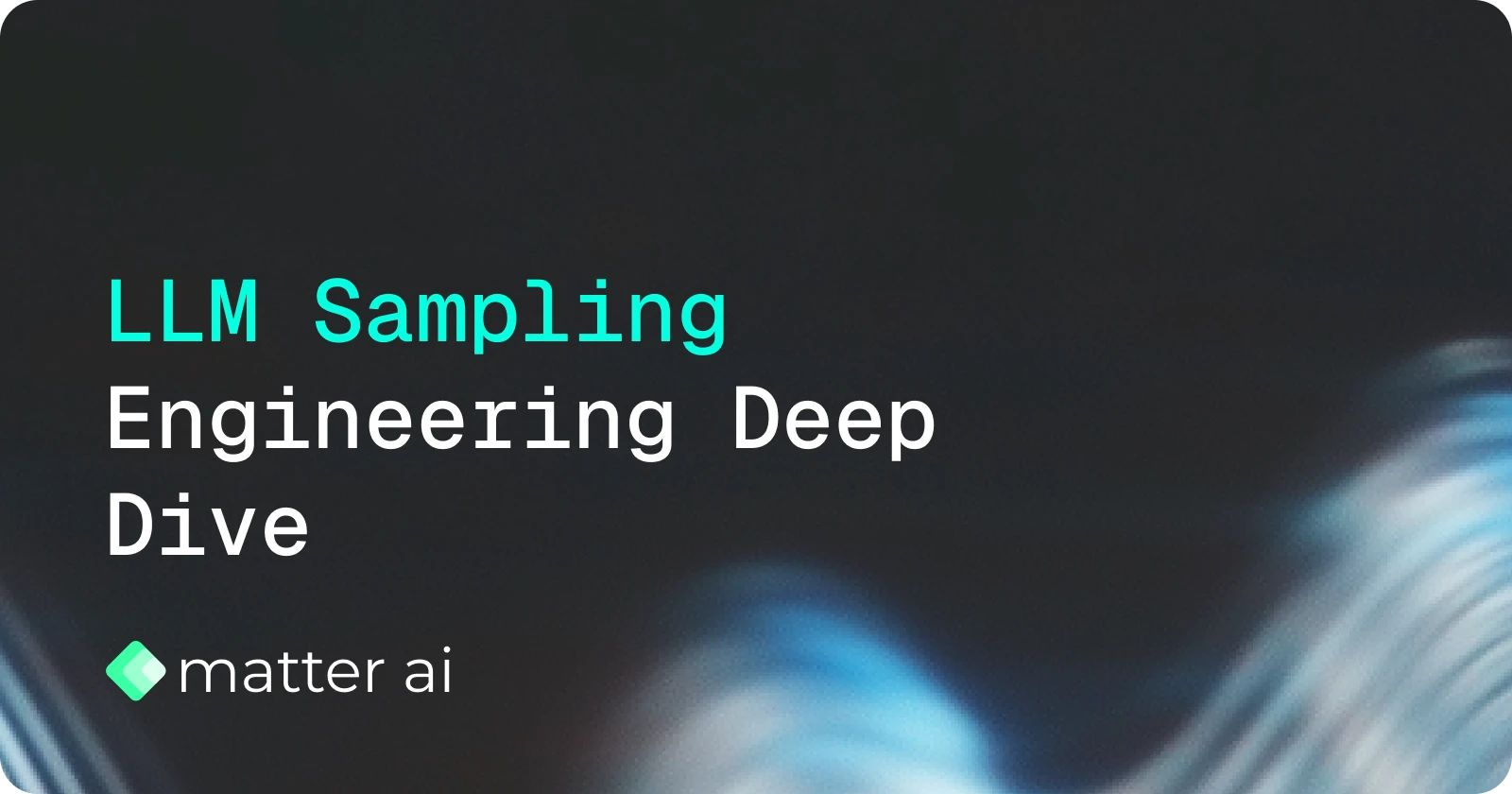
LLM Sampling: Engineering Deep Dive
How to tune LLMs to work for you with samplings
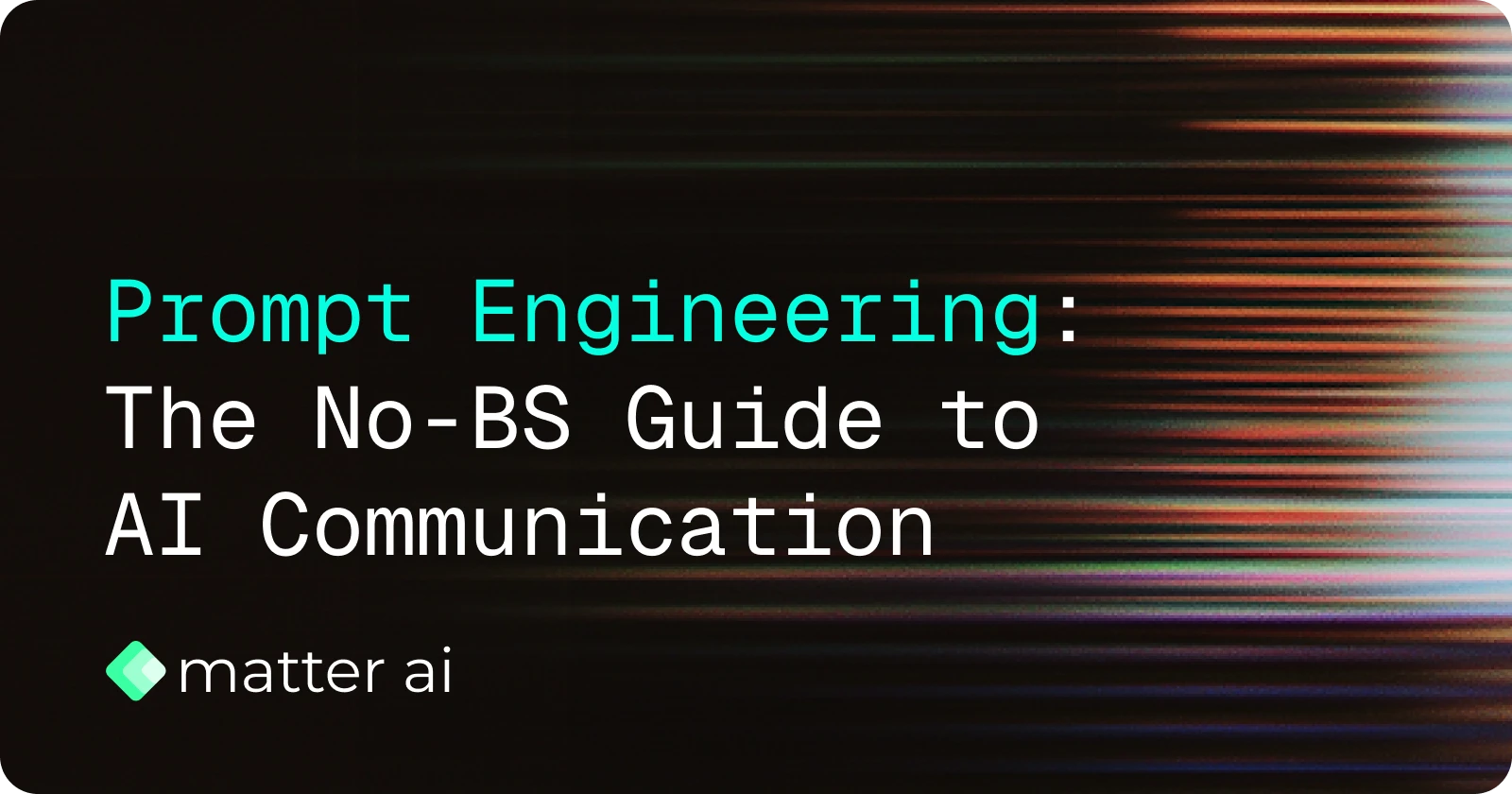
Prompt Engineering: The No-BS Guide to AI Communication
Understand, structure and implement prompts that gets you the best, consistant and reduced hallucination outputs.
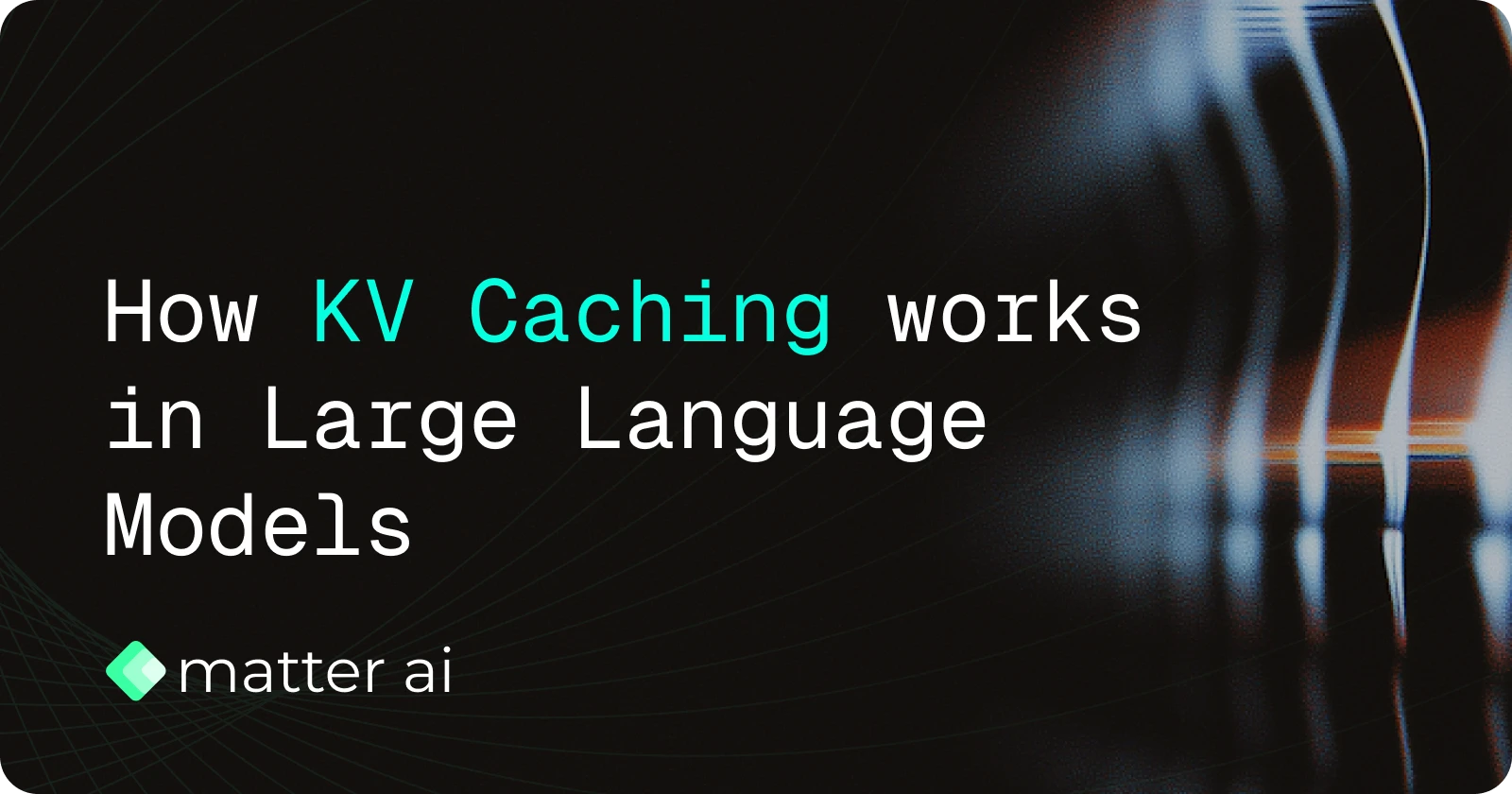
How KV Caching Works in Large Language Models
KV caching is the optimization that solves this problem, making LLMs faster and more efficient
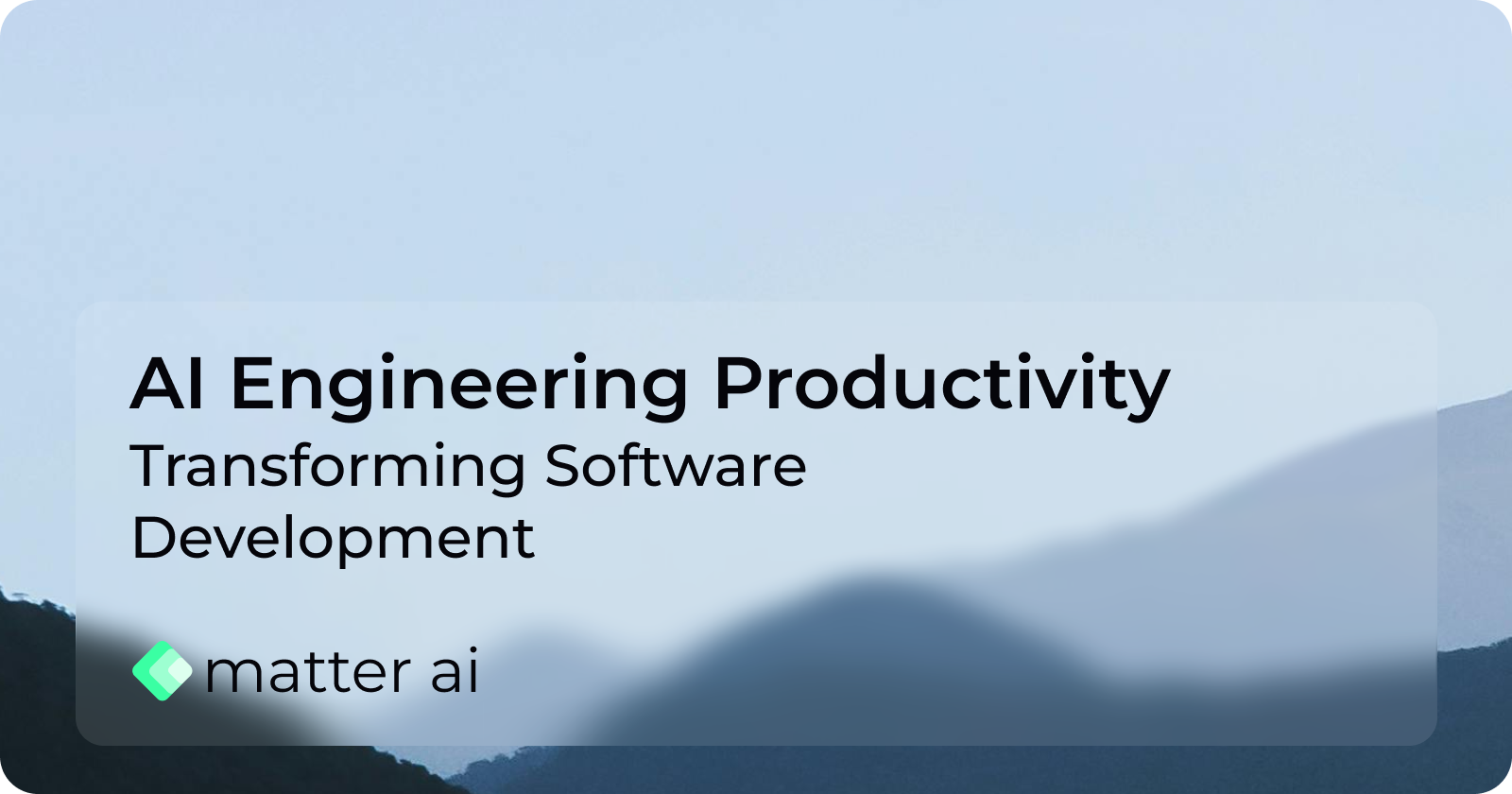
AI Engineering Productivity: Transforming Software Development
Artificial intelligence isn't just another tool in the developer's toolkit—it's fundamentally changing how we approach problem-solving, code creation, and system design.
Continue Reading

Introducing Axon Code, VS Code AI Coding Agent | Cursor Alternative
The next generation harness AI Coding Agent

LLM Sampling: Engineering Deep Dive
How to tune LLMs to work for you with samplings

Prompt Engineering: The No-BS Guide to AI Communication
Understand, structure and implement prompts that gets you the best, consistant and reduced hallucination outputs.
